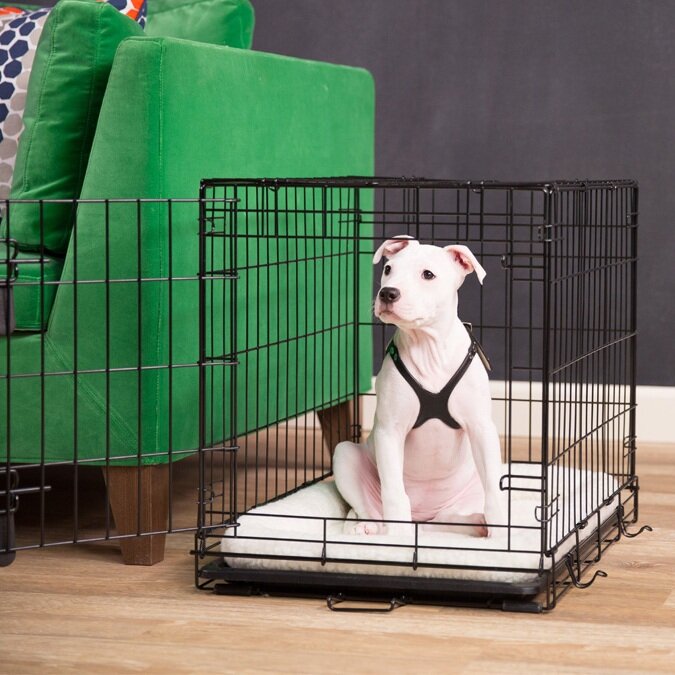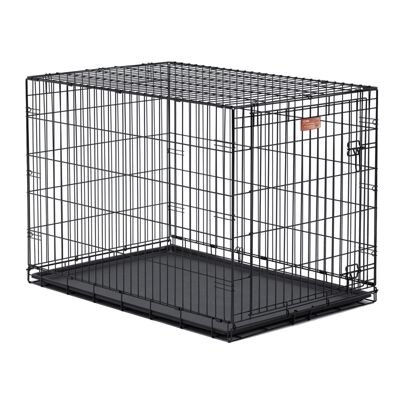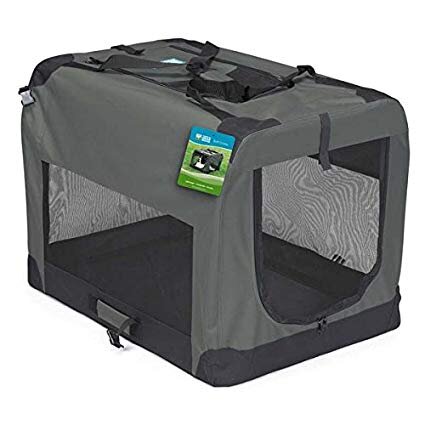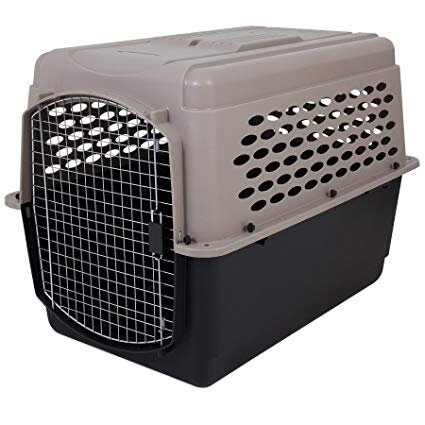How To Crate Train Your Puppy
Why is it helpful to crate train a puppy?
Crates are commonly used for potty training purposes for puppies. They allow new dog parents to confine the puppy to a certain area of the house in order to prevent her from eliminating all over the place, as well as engaging in other unwanted behaviors, such as chewing on inappropriate items, ingesting something potentially dangerous, etc.
A create can be used to create a space that is safe, private and comfortable for our dogs. Crates also make wonderful “special chew time” areas, which helps teach our dogs that being alone is not so bad after all and thus work as prevention tools for separation anxiety.
Crates also come in handy when traveling with ours dogs, whether that’s in a car, train or a plane. Having a dog who is crate trained will significantly reduce her stress while traveling. Having a dog who feels comfortable being crated will be much calmer if she needed to stay at the vet’s clinic overnight. These are just a few examples of why crate training your dog will improve your life together. Now let’s dive deeper into the world of dog crates!
What Are Crates?
Crates can be made out of metal, mesh material, or out of plastic. Their size depends on your dog, but a general rule of thumb is that your dog should be able to have enough space to stand up and turn around.
The type of crate you get depends largely on you and your dog’s preferences, as well as the layout and decoration of your home. You could add a cozy blanket, a bath mat, a bed, or anything else to make the space more comfortable. There are several types of non-spill water bowls you could add as well. You could even cover the top of the crate to make it more private, if your dog likes it. Some dogs, however, tend to destroy bedding & decorations, for a variety of reasons, so closely observe your dog and set up her area in accordance to her needs.
How To Crate Train A Puppy
A simple crate training exercise
Place the crate in the room, sprinkle some high-value treats (hot dogs, roasted chicken, steak, etc) inside it and allow your dog to explore the space.
If she is wary of it, treat her heavily for just looking at the crate and progress with moving towards the crate, placing one paw inside the crate, two paws, etc. Take it slow and make the introduction gradual. Doing several 2-3 min. sessions is usually more productive than a prolonged exposure.
Once your dog starts entering the crate, give her treats inside the crate and work on duration (have her stay inside for 30sec, 1min, 3min, 5min, etc).
When your dog is comfortable inside the crate, close the door for a second, and gradually extend the duration she stays inside with the door closed.
Start giving your dog her dinner in the crate as a part of the training process.
Chew toys and bones can be made a crate-only activity too.
As your dog begins to enjoy her special crate time, begin exiting the room. Leave her only for a few seconds initially and slowly increase the time she’s left in there alone.
How long your dog can stay in her crate depends on her age. Younger puppies should be crated for shorter amounts of time, as you don’t want your puppy to potty in the space. Even older and more crate experienced dogs shouldn't be left alone in a crate during the day for more than a few hours (max of 4 to 5 hrs).
It’s ok to train your dog to sleep in her crate during the night. Just make sure that you’d be able to attend to her, if she needs to be let out for a potty break.
Most Common Problems When Crate Training A Puppy
Why does your puppy cry in their crate?
It’s important to find a balance between allowing your puppy the space to self-soothe and settle, but not letting your pup cry and panic inside of the crate for too long. Try talking to or placing your hand inside the crate in order to help your dog feel more comfortable. I tend to give it between 10-20 min max and if my puppy is still crying, take her out and tend to her needs. Then, go back to earlier steps of crate training in order to make sure she’s creating a positive association with the crate.
Why does your puppy potty in their crate?
A puppy wouldn’t want to stay/sleep in his excrements, so there are several reasons for the accident:
Your dog comes from a puppy mill/breeder situation or from a pet store where they have been allowed/forced to potty in their living area. These dogs generally take longer time to potty train.
Your puppy has been in the crate for too long. Make sure to keep a track of your puppy’s potty schedule in order to avoid this from becoming a habit. Use an enzyme cleaner to remove the smell from the area.
Why does your puppy destroy the bed in their crate?
This happens often when the dog becomes bored in her crate. Remove the bedding and make sure your dog gets plenty of exercise and an opportunity to potty before she gets confined. Always leave your dog in her crate with a chew toy. Rotating a set of squeaky, soft and chew toys helps keep your dog occupied during crate time.
The Dont’s Of Puppy Crate Training
Don’t use the crate as a punishment. You really don’t want your dog to feel negatively about this space.
If your dog has an accident in her crate, don’t rub her face/nose in it. This myth has long been debunked as ineffective. Clean up the area and maintain a more effective potty schedule.
Don’t place the crate in a busy area of your home with loads of foot traffic. Instead choose a quiet area, but still allow your dog to feel included in your home’s dynamics.
Don’t leave your dog in her crate for long periods of time.
If your dog had to potty in the middle of the night, don’t engage with her. Take her out calmly and take her right back in after she’s done. You don’t want to create a habit of midnight play time.
For additional information on this topic, we’ve created this free inforgraphic, as well as this accompanying podcast episode on this very subject, which you can listen to below:




